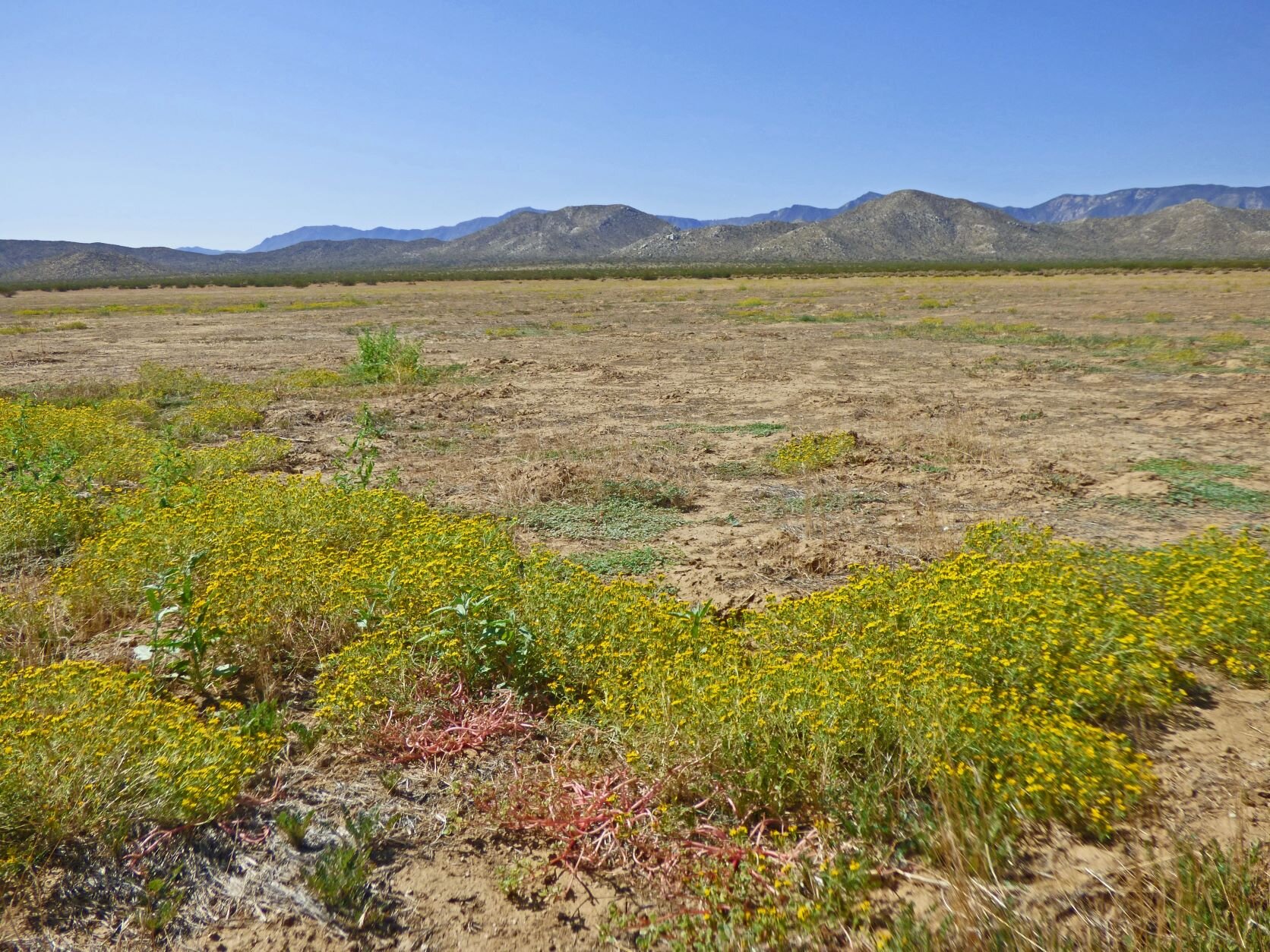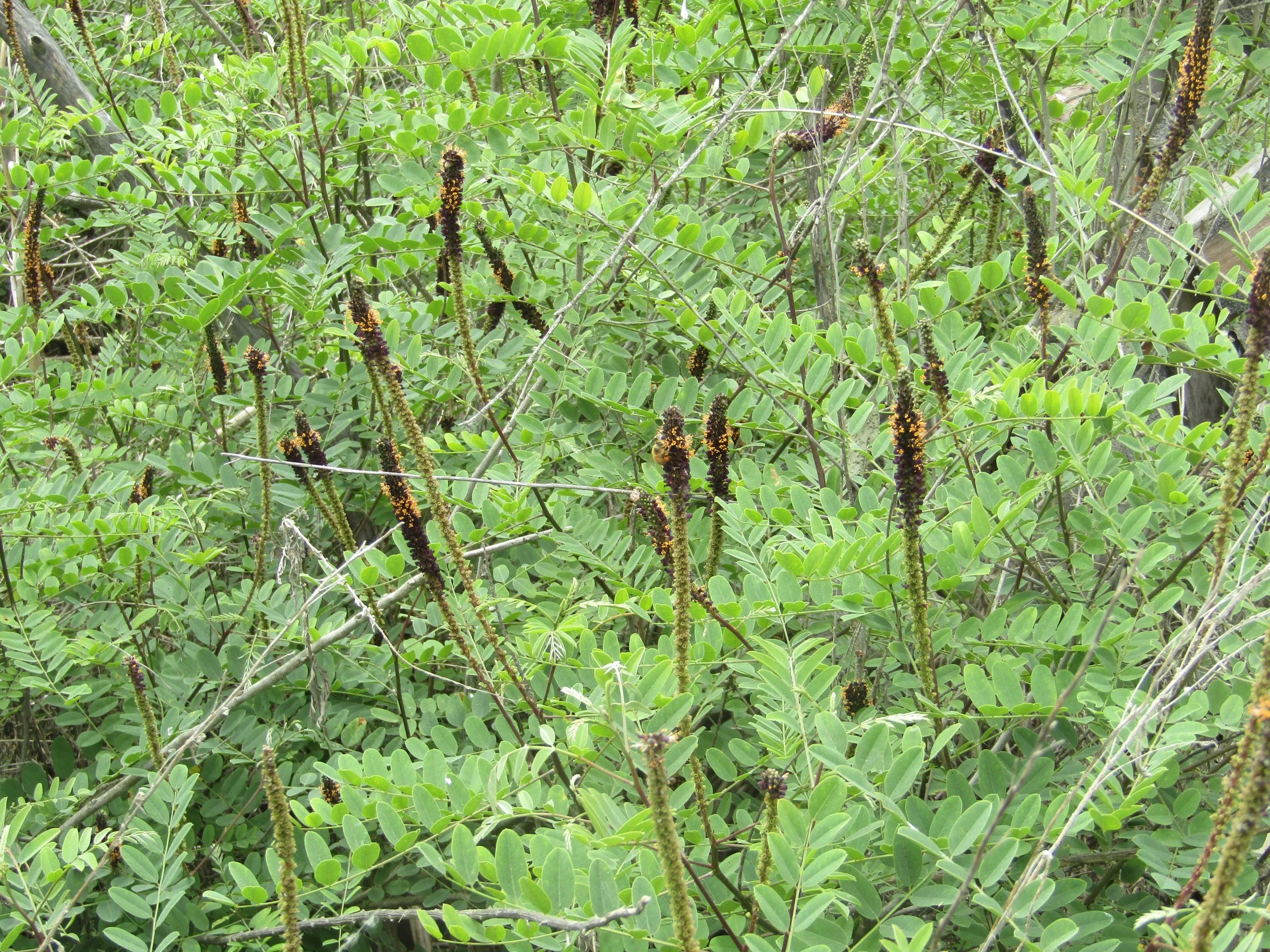We treated artichoke thistle (Cynara cardunculus) at Lusardi Creek. We also treated four areas where Carnation spurge (Euphorbia terracina) is persisting. One of these was near the end of a berm extending into the Creek. We had to fight our way past thick native brush that we had restored in order to reach it. This was encouraging despite our leaning toward despair at ever getting rid of this invasive. There are two additional areas but we didn’t have time to tackle them.
This week's photo is of native Watercress (Nasturtium officinale) against a backdrop of drying pond scum along the banks of the San Dieguito River. According to Calscape, it is a water-loving plant spread almost worldwide, from Europe to central Asia to across the US. It is also one of the oldest known leaf vegetables consumed by human beings. It is botanically related to garden cress and mustard, all known for a peppery, tangy flavor.
This week I have Monday and Saturday to lead work parties. Email me if you can help.
— Robert Byrnes
Co-chair
Habitat Restoration Committe
CNPS-San Diego








